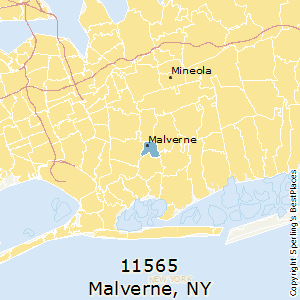Contents:


Fast set-up With pre-built reports, data collection forms, checks and workflows, the SG&A Management CCH Tagetik Starter kit ensures you’ll be on top of your data quickly. We suggest building a roadmap for enterprise technology investment and emerging technology adoption. The roadmap should outline how technology will be used to improve performance. This post is to be used for informational purposes only and does not constitute legal, business, or tax advice.
Jail for ex-police national serviceman in SG who entered female toilet, insulted policewoman’s modesty – The Star Online
Jail for ex-police national serviceman in SG who entered female toilet, insulted policewoman’s modesty.
Posted: Thu, 13 Apr 2023 20:14:00 GMT [source]
Typical G&A expenses include the salaries of administrative and management staff, rent, utilities, legal fees, HR expenses, and insurance payments. Selling, general, and administrative (SG&A) expenses account for the essential costs of running the day-to-day business operations. When looking at the income statement, COGS is subtracted from the net revenue. Under the gross margin, SG&A and all other expenses are listed. Subtracting these costs from the gross margin gives you the net income. In order for businesses to effectively and efficiently manage their expenses, it is essential for them to have a solid understanding of the various SG&A expense categories.
COGS for Manufacturing Businesses
Selling expenses are direct, meaning at the time of the sale, as well as indirect, meaning before and after the sale. General and administrative expenses refer mainly to the day-to-day overhead costs. Indirect costs are any costs incurred when trying to earn sales. They happen before the sale of a product, or throughout a sales cycle.

Selling general and administrative (SG&A) expenses comprise all direct and indirect selling costs, operational overhead costs, and administrative expenses unrelated to production and sales. SG&A often includes rent, utilities, legal fees and insurance. In times of financial difficulty, operating expenses can become an important focus of management when implementing cost controls. Operating expenses include costs that are incurred even when no sales are generated, such as advertising costs, rent, interest payments on debt, and administrative salaries. But typically, selling, general, and administrative expenses represent the same costs as operating expenses. For many companies, operating expenses and SG&A are the same thing.
What is an SG&A expense?
It is the total of the costs essential for the manufacturing process, like advertising, commissions, travel, etc. RevenueRevenue is the amount of money that a business can earn in its normal course of business by selling its goods and services. In the case of the federal government, it refers to the total amount of income generated from taxes, which remains unfiltered from any deductions.
SG&A is reported on a business’s income statement and reflects the sum of all selling expenses . Just what the acronym stands for, it’s the tracking of these three expenses , essentially a summary of all the expenses that it takes to run your business from top to bottom. Repairs and maintenance made to buildings, plant machinery and office equipment are classified as SG&A expenses, along with the depreciation of these assets. SG&A expenses are an important financial metric impacting a company’s profitability and efficiency.
SG&A expenses, R&D spending, capital expenditure, and depreciation and amortization expenses
Selling, General, and Administrative expenses (SG&A) are the costs incurred by a company in its daily operations, excluding the costs of producing goods or services. SG&A includes salaries and wages, rent, utilities, advertising, marketing, legal and professional fees, insurance, office supplies, and other overhead costs. A company incurs these expenses regardless of whether they generate or do not generate sales and are typically a significant component of a company’s operating expenses.
Several repeated positions can be cut down to reduce the what is bookkeeping costs and increase the operating income. Sometimes to boost profitability, these costs need to be regularized. Our online training provides access to the premier financial statements training taught by Joe Knight. Learn finance in a fun and clear way that’s easy and painless.
Understanding Selling, General, and Administrative Expenses (SG&A)
Getting tax return and payment filing done on time is easier when you know what to expect and when they are due. As a business owner, you have many options for paying yourself, but each comes with tax implications. Learn what you can do to maximize your profits by minimizing your taxes.

For companies wanting to optimize their service delivery models, we offer deep expertise in organizational design and in business process outsourcing options including HR outsourcing, IT outsourcing and more. Our cash flow analysis services have helped clients to free up billions of dollars in improved cash flow. SG&A expenses only reflect a portion of a company’s operating expenses and do not include the costs of producing goods or services. It means more than the SG&A expenses are needed to provide a complete picture of a company’s financial health.
What’s Included in COGS vs SG&A?
Before you can enter the https://1investing.in/ SG&A expenses on your income statement, you’ll need to create a detailed list of the selling, general, and administrative expenses, which can be added up from various expense journals. SG&A costs are reported on the income statement, the financial statement that your business prepares to figure out how profitable it is. SG&A is neverincluded in COGS; instead, it includes all non-production costs. It is listed in the expenses section of your financial statement.
Koninklijke Ahold Delhaize N.V., formerly known as Ahold N.V., is based in Zaandam, Netherlands. Owl staff understands not only the financial side of business but is able to coach us on other aspects of business decisions and to help us define alternatives. As a business executive, you’re no doubt familiar with profit and loss. She is a Certified Public Accountant with over 10 years of accounting and finance experience. Though working as a consultant, most of her career has been spent in corporate finance. Helstrom attended Southern Illinois University at Carbondale and has her Bachelor of Science in accounting.
SG&A Management supports approval processes, capacity analysis and variance analysis. Enabling tax and accounting professionals and businesses of all sizes drive productivity, navigate change, and deliver better outcomes. With workflows optimized by technology and guided by deep domain expertise, we help organizations grow, manage, and protect their businesses and their client’s businesses. Seek new technologies, invest in them and prepare your workforce to invest time to become proficient. Most chemicals companies lag when it comes to adopting technology such as data visualization tools, RPA, AI or data analytics/big data.
- An operating expense is an expenditure that a business incurs as a result of performing its normal business operations.
- These costs are categorized as administrative expenditures and fall under the SG&A umbrella of expenses.
- One of the most common problems with profit and loss statements is that different companies use different categories and terminology to refer to different types of expenses.
- Repairs and maintenance made to buildings, plant machinery and office equipment are classified as SG&A expenses, along with the depreciation of these assets.
- With more accurate cost and profit measures, management can know which product lines and markets most deserve corporate resources and attention.
However, U.S. accounting standards treat R&D as a separate operating expense that’s not part of SG&A. Depreciation is typically reported as a separate line item within operating expenses, too. Both operating expenses and SG&A are key components of tracking net income, or what’s left over after subtracting expenses and taxes from revenue.

SG&A are the operating expenses incurred to 1) promote, sell, and deliver a company’s products and services, and 2) manage the overall company. On the income statement, total revenue is shown and reduced by COGS to arrive at gross profit. This shows how much revenue remains to cover operating expenses and hopefully still leave a profit. To correctly track expenses and other important financial data, consider purchasing small business accounting software. It expedites and accelerates financial processes while ensuring accuracy and compliance.























